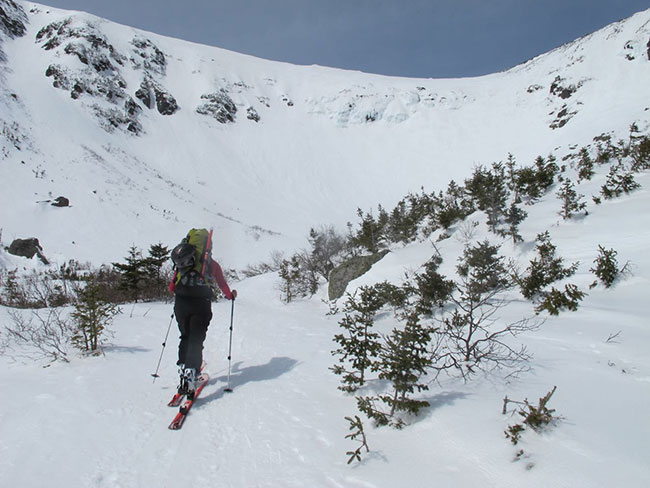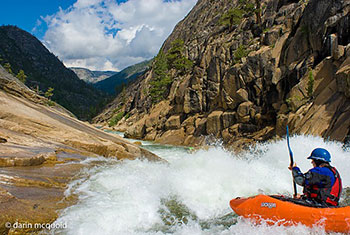
Sun protection is an outdoor essential year round, not just on a sunny hike or summer swim.
Climbing higher? Ultraviolet (UV) radiation levels increase 10 percent with every 1,000 meters gained in altitude. Skiing or snowshoeing? Snow reflects up to 80 percent of UV rays, nearly doubling your exposure. Paddling? Water and sand reflect back 10 to 25 percent of UV rays.
Sun protection prevents more than a painful post-trip sunburn. The vast majority of skin cancers are associated with UV exposure from the sun. And while most skin cancers are preventable, rates are rising. Melanoma, the deadliest form, doubled in incidence in the United States from 1982 to 2011.
Effective sun protection entails more than slapping on some sunscreen once a day (which only 20 percent of people even do). So, as part of our Year of Essential Outdoor Gear, we're taking a look at Essential #2, sun protection.
Cover Up with Clothing
What you wear is your skin's first line of defense against sun damage. Of course, your outdoor apparel depends on the season, conditions, and activity. If skiing in winter, you'll likely cover a good portion of your skin anyway. But even in warm weather, consider wearing a long-sleeve shirt, pants, and hat with a wide brim.

Water reflects back UV rays and can wash away sunscreen. Reapply every two hours. (Photo by member Darin McQuoid)
Weave, color, and weight determine each clothing's level of sun protection, but it can be difficult to determine with a glance. Many warm-weather and water-specific pieces, like sun sleeves or rash guards, come with UPF ratings.
Protect Eyes from Rays
Sunglasses, glacier glasses, and goggles offer your eyes year-round protection. This is extra important on snow, water, or sand where reflected rays can cause the temporary blindness and pain of a sunburned cornea.
Look for sunglasses that offer 99 to 100 percent UV protection. For additional indirect coverage, choose ones that wrap around or that come with removable side shields.
Consider Shade and Time of Day
The time of day you travel and shade available significantly affect your UV exposure. While limiting time in the sun may not be practical when you're trying to make it to the next summit or campsite, keep in mind that UV rays are most intense 10 a.m. to 4 p.m. from April to October. But, even on a cloudy day up to 80 percent of rays can pass through to your skin.
The U.S. National Weather Service forecasts local UV indexes for planning purposes.
Apply Sunscreen (then do it again)
Sunscreen usually comes first to mind for sun protection—and it is essential—but it's actually your last line of defense. The Food and Drug Administration recommends wearing a broad-spectrum sunscreen with an SPF value of 15 or higher for regular daily use. SPF 30 to 50 is recommended for extended exposure, like that hike or climb.
Sunscreens work by using either chemical ingredients (for ex. avobenzone or benzophenone) that absorb UVA and UVB rays or by using physical ingredients (for ex. titanium dioxide or zinc oxide) that reflect, scatter, and absorb UVA and UVB rays.
Wear sunscreen daily and a lip balm with SPF. Reapply liberally on all exposed skin every two hours, more often if you're working up a sweat or in the water.
For sunscreen recommendations, check out the Environmental Working Group's annual Sunscreen Guide.
What about all of those terms?
SPF, UPF, UV—It's easy to get overwhelmed by acronyms. The FDA (there's another!) overhauled sunscreen-labeling standards in 2011 for accuracy and effectiveness.
Here's a primer on what those labels mean:
- Broad-spectrum or full-spectrum sunscreens protect against both UVA and UVB rays. Your sunscreen should be broad spectrum.
- SPF (Sun Protection Factor) is the degree to which you are protected from sunburn and measures the amount of UVB protection. For example, SPF 15 blocks about 94 percent of UVB rays, SPF 30 blocks about 97 percent, and SPF 50 blocks about 98 percent, but only if you use the full amount.
- UPF (Ultraviolet Protection Factor) ratings are used for clothing and indicate what fraction of the sun's UV rays can penetrate. For example, a shirt with a UPF of 50 lets 1/50th of the sun’s UV radiation pass through.
- UVA is ultraviolet radiation that causes tanning, and contributes to aging of the skin and the development of skin cancers.
- UVB is ultraviolet radiation responsible for sunburn, aging of the skin, and the development of skin cancers.
The more time you spend outdoors the more UV radiation you'll be exposed to, naturally. And if you're reading this, you probably like spending time outside, especially when the sun is shining.
You don't have to give up your backcountry adventures or limit yourself to nighttime trips to be sun safe though. Understanding how factors like altitude, snow, water, apparel, and sunscreen affect your UV exposure can help you lower the risks whenever you go out. Whether mountaineering in winter or trail running in summer, sun protection should be an essential part of your outdoor planning and gear anytime of year.
Stay tuned, as we'll take a look at more of the 10 Essentials throughout 2016.
For more sun safety info:
- Sun Safety: Save Your Skin (Food and Drug Administration)
- Sun Safety (Centers for Disease Control and Prevention)
- Sun Safety and Sunscreen: The Burning Facts (Environmental Protection Agency)
-
Sun Protection and UV Radiation (World Health Organization)
- Skin Cancer Foundation
-
Sunscreen FAQs (American Academy of Dermatology)
- EWG Guide to Sunscreens (2016 coming soon) and Sun Safety Campaign (Environmental Working Group)

 by Alicia MacLeay
by Alicia MacLeay











